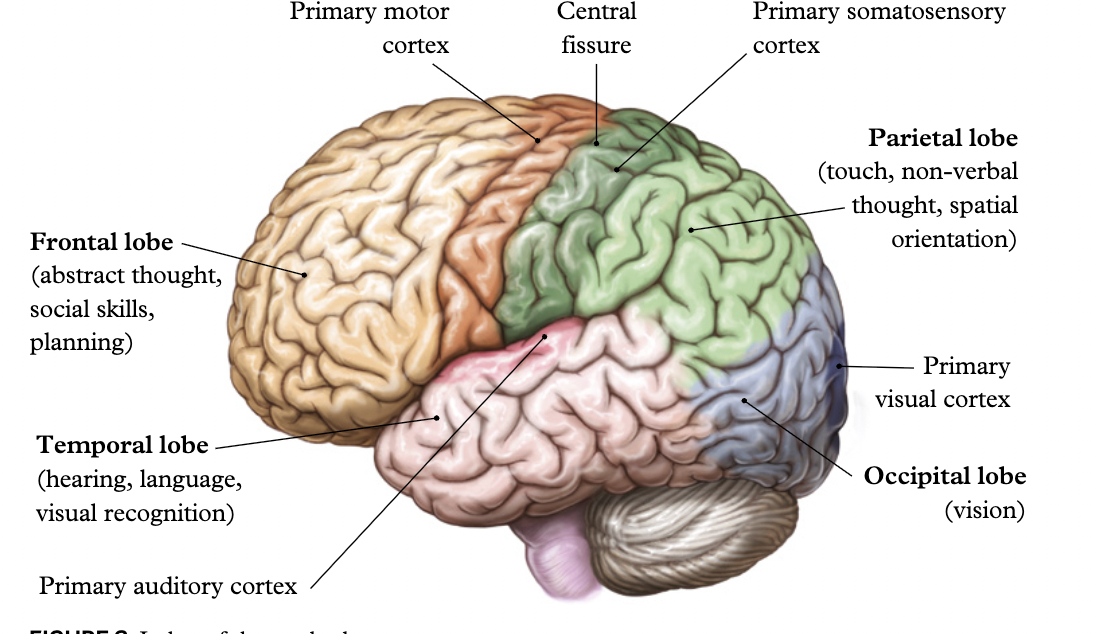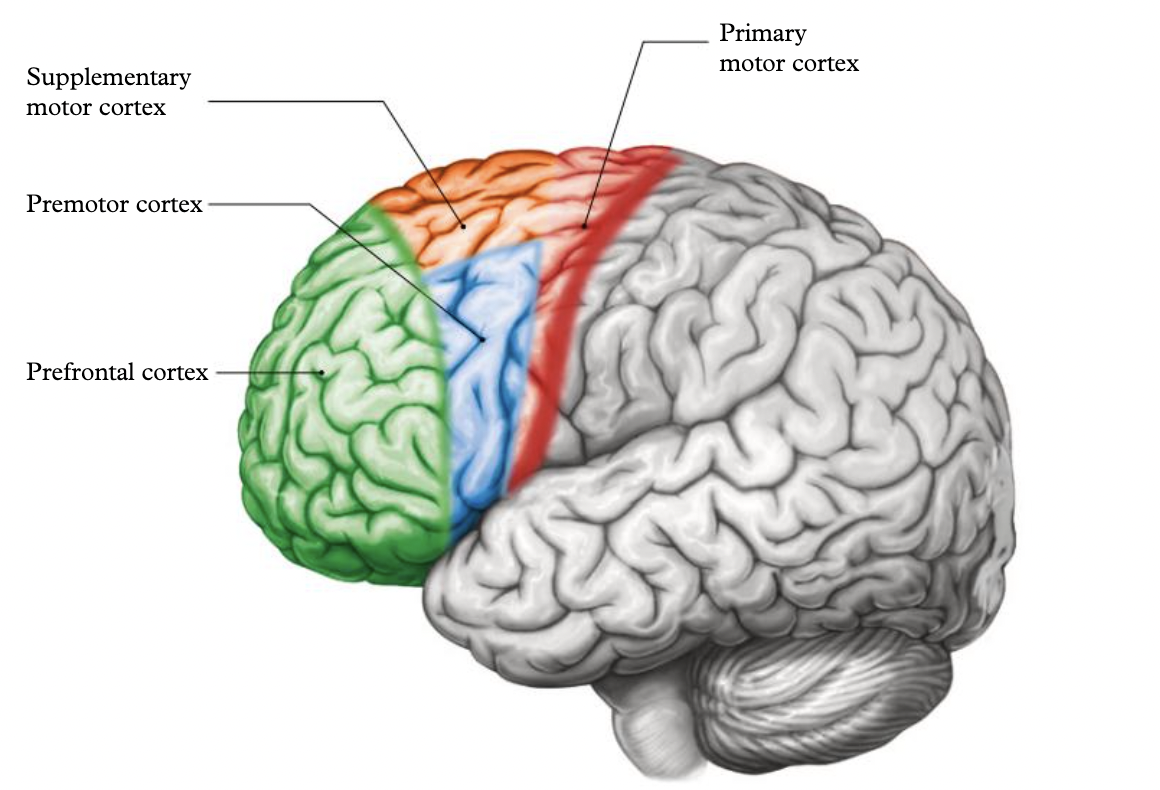Lobes of Cerebral Cortex

Frontal Lobe
The frontal lobe is the largest lobe of the cerebral cortex and is located near the front of the
head. It is responsible for higher cognitive functions such as memory, emotions, language,
problem-solving, planning and initiating body movement. The frontal lobe is regarded as
the centre of behaviour and cognition, and the root of our personality.
Prefrontal cortex
The prefrontal cortex sits at the front of the frontal lobe and is
involved with planning motor sequences (for example, deciding how
to move your arm to pick up an item), reasoning and solving problems.
The prefrontal cortex is also involved in regulating and modifying
emotions and executive functioning (high-order cognitive skills, such as
multitasking, using memory and decision-making). The underside of the
prefrontal cortex is associated with and connects brain regions involved
in emotional processing.
Primary motor cortex
Situated at the rear of each frontal lobe is a primary motor cortex. The primary motor
cortices are responsible for the body’s skeletal muscle movement and voluntary movement.
The left primary motor cortex is responsible for movement of the right side of the body and
the right primary motor cortex is responsible for movement of the left side of the body. This is
called contralateral organisation. Damage to either the right or left primary motor cortex
will result in a person being unable to move certain parts of their body.

Parietal Lobe
The parietal lobe is located at the top of the cerebral cortex behind the frontal lobe. It is
responsible for processing bodily sensations and somatosensory information such as touch,
temperature and pressure.
Primary Sensory Cortex
The parietal lobe integrates and interprets sensory information to
help us understand what we are experiencing internally in our bodies and externally in our
environment. This area is known as the primary somatosensory cortex and it is
responsible for processing sensory information from our body’s sensory receptors.
The right somatosensory cortex processes sensations on the left side of the body and the
left somatosensory cortex processes sensations on the right side. The primary somatosensory
cortex is also arranged so that it receives information from specific areas of the body. More
sensitive areas of the body, such as the lips and fingers, take up a greater area than less
sensitive areas, such as the torso. The more sensitive the area, the more sensory receptors are found there, and the greater the allocation of the somatosensory cortex.
Occipital
The occipital lobe is located at the back of each cerebral hemisphere and is responsible
for processing vision and visual information. It is the smallest of the four cortical lobes.
Each occipital lobe interprets information from the eyes. Information from the left side of each retina is processed in the left occipital lobe and information from the right side of each retina is processed in the right occipital lobe. A primary visual cortex sits within each occipital lobe; these visual cortices are responsible for processing different types of visual stimuli (for example, colour or brightness). Sensory information detected by the retina is sent to the primary visual cortex where visual stimuli is processed to form our perception.
Temporal Lobe
The temporal lobes are located along the sides of the brain near the ears. They are
responsible for processing auditory information. The temporal lobes of each hemisphere
receive information from the ears and allow us to interpret the sounds we hear. The primary
auditory cortex is an area in the temporal lobe that is responsible for our ability to hear and
process sounds.
Broca’s area
Broca’s area is a small region of the brain located in the frontal lobe of the left hemisphere. It is located near the primary motor cortex and the proximity of these two areas enables the necessary muscle movement to produce meaningful speech.
Wernicke’s area
Wernicke’s area is a region in the brain located in the left temporal lobe, close to the
primary auditory cortex. It is responsible for language comprehension; specifically, the
comprehension of speech and sounds. Wernicke’s area is involved in choosing the words
needed for speech so that language makes sense and can be understood.